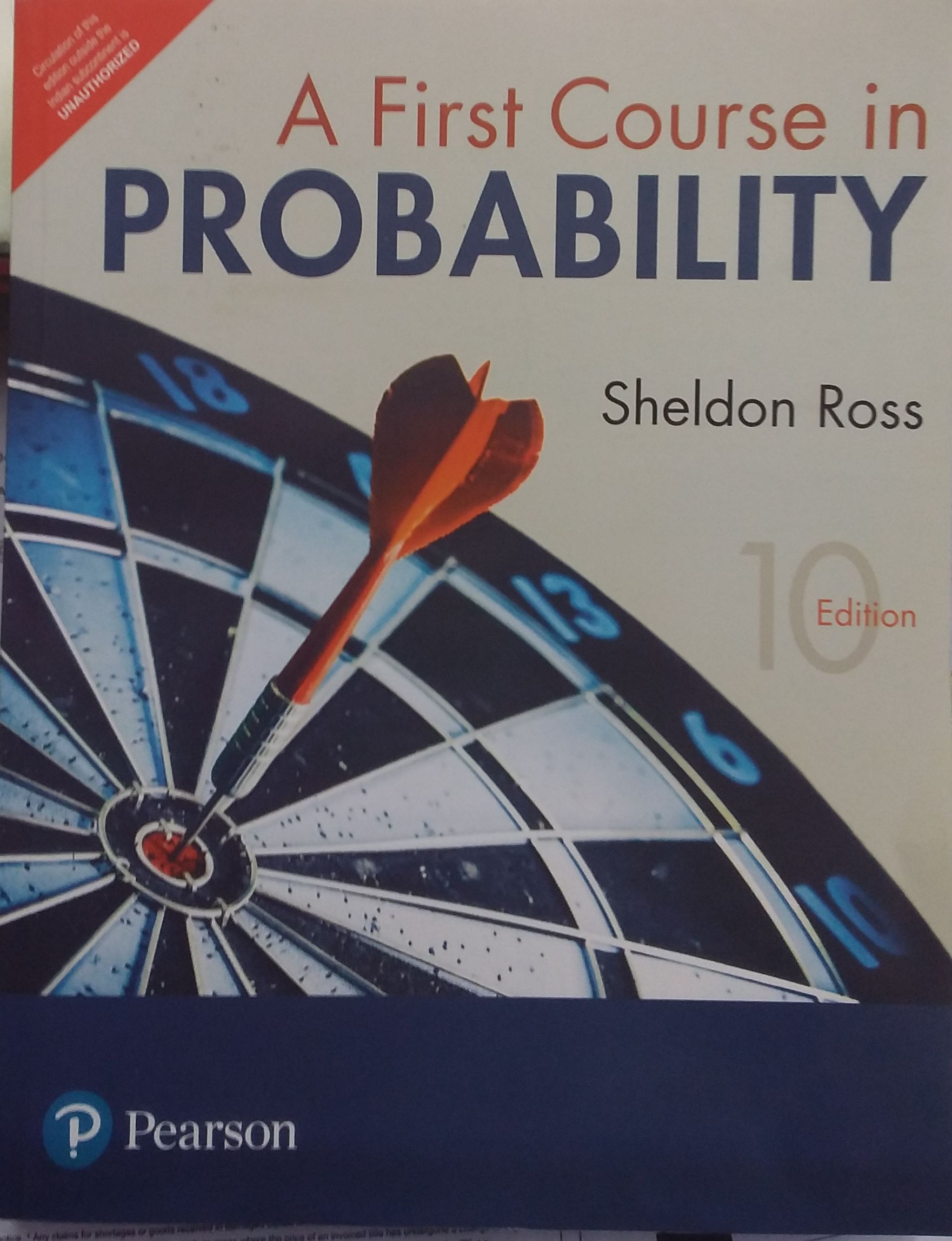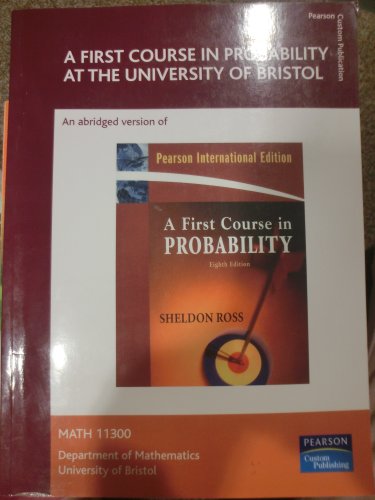Imagine yourself standing at a crossroads, faced with multiple paths. Each path represents a different outcome, and you need to choose the one most likely to lead you to success. This is where probability steps in, offering a powerful framework to analyze events, predict outcomes, and make informed decisions. Sheldon Ross’s “A First Course in Probability” 9th Edition serves as your guide, unlocking the secrets of this fascinating field and equipping you with the knowledge to navigate life’s uncertainties with confidence.

Image: universalbooksellers.com
Probability isn’t just for mathematicians or statisticians; it’s woven into the fabric of our everyday lives. From the odds of winning the lottery to the chances of rain tomorrow, probability helps us understand the world around us and make informed choices. Sheldon Ross’s textbook, widely acclaimed for its clarity and accessibility, has become a cornerstone for students and professionals seeking to master the fundamentals of probability.
A Comprehensive Guide to Probability: Delving into Sheldon Ross’s Masterpiece
“A First Course in Probability” 9th Edition is more than just a textbook; it’s an engaging exploration of the world of chance. The book’s strength lies in its ability to break down complex concepts into digestible steps, making them accessible even to those with limited mathematical backgrounds.
Fundamentals of Probability: Ross starts by laying the foundation, introducing you to basic concepts like sample space, events, and probability measures. These building blocks form the basis for understanding more advanced topics.
Discrete and Continuous Random Variables: Ross delves into the intricacies of random variables, which represent numerical outcomes associated with random events. He explores both discrete random variables, which can take on only a finite number of values (like the number of heads in three coin flips), and continuous random variables, which can take on any value within a given range (like the height of a person).
Probability Distributions: Understanding the distribution of random variables is crucial for making predictions. Ross introduces a wide range of probability distributions, including the Bernoulli, binomial, Poisson, normal, and exponential distributions, each with its unique characteristics and applications.
Expectation and Variance: Ross explores the concepts of expectation and variance, which are fundamental for analyzing the average value and spread of random variables. These concepts provide insights into the central tendency and variability of data.
Joint Distributions: Ross introduces the concept of joint distributions, which describe the behavior of two or more random variables together. This allows us to analyze the relationships between different events and their combined probabilities.
Conditional Probability and Bayes’ Rule: Ross delves into the fascinating realm of conditional probability, focusing on how the probability of an event changes when we have additional information. Bayes’ Rule, a key formula derived from conditional probability, provides a framework for updating beliefs based on new evidence.
Limit Theorems: As we explore more complex probability situations, limit theorems come into play. Ross introduces the Law of Large Numbers and the Central Limit Theorem, which are fundamental theorems in probability theory. They provide powerful insights into the behavior of random variables as the number of observations increases.
Real-World Applications: Probability’s Impact on Our Lives
The beauty of probability lies in its real-world applicability. Here are just a few examples of how probability theory shapes our world:
Finance and Investment: Probability plays a vital role in financial decision-making, from risk assessment to portfolio optimization. By understanding the probability distributions of financial assets, investors can make more informed investment decisions, aiming to maximize returns while mitigating risk.
Insurance: Insurance companies rely heavily on probability theory to set premiums and assess the likelihood of claims. They use statistical models based on historical data to determine the probability of events like accidents, fire, or death, allowing them to calculate the cost of coverage and manage risk effectively.
Healthcare: Probability is essential in clinical decision-making. Doctors use probability to assess the likelihood of certain diagnoses, the effectiveness of treatments, and the risks associated with medical procedures. Probabilistic models help guide treatment strategies and provide insights into patient outcomes.
Quality Control: In manufacturing, probability plays a key role in quality control. Statistical sampling techniques, based on probability principles, allow manufacturers to test a small sample of products to ensure that the entire batch meets quality standards. This helps reduce production costs and minimize defects.
Gambling: From casinos to lotteries, gambling is inherently linked to probability. The odds of winning are determined by probability theory, and understanding those odds is crucial to making informed bets and managing gambling risks.
Expert Insights and Actionable Tips for Mastering Probability
To truly excel in probability, consider these insights from experts and tips:
Embrace the Power of Simulation: Often, complex probability problems can be solved through simulation. Using software programs, you can generate random samples and simulate the behavior of random variables, providing valuable insights into their distributions and expected outcomes.
Embrace the Concept of Independence: The concept of independence is crucial in probability. Understanding when events are independent of each other allows you to simplify complex probability calculations and make more accurate predictions.
Practice, Practice, Practice: Like any skill, mastery in probability requires practice. Work through examples, solve problems, and engage in real-world applications to solidify your understanding and develop your problem-solving skills.
Don’t Be Afraid to Ask for Help: If you encounter challenges, don’t hesitate to seek guidance. Consult with your professors, classmates, or online resources for assistance, fostering a collaborative learning environment.
Embrace the Beauty of Uncertainty: Probability exists to grapple with uncertainty. Rather than viewing uncertainty as a weakness, embrace it as an opportunity for discovery and growth. With each calculation and analysis, you gain a deeper understanding of the world’s complex randomness.

Image: www.iberlibro.com
Sheldon Ross A First Course In Probability 9th Edition
https://youtube.com/watch?v=BquE8Z9htws
Conclusion: A Journey of Discovery and Empowering Decisions
Sheldon Ross’s “A First Course in Probability” 9th Edition is more than just a textbook; it’s a passport to a fascinating world of chance. By understanding the principles and tools of probability, you will gain a profound ability to analyze events, predict outcomes, and make informed decisions in all aspects of your life. So, embrace the journey of discovery, delve into the world of probability, and unlock the power of informed choices. What are you waiting for? Get your copy of “A First Course in Probability” today and start exploring the mysteries of chance!






